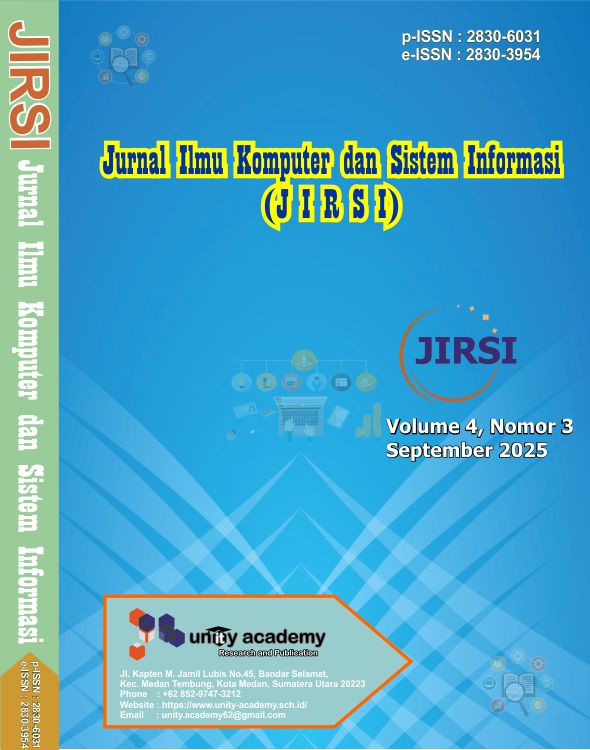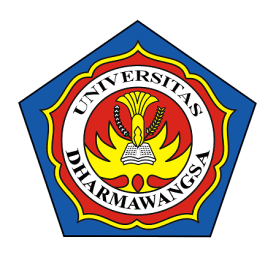Mengenal Dinosaurus Dengan Memanfaatkan Game Edukasi Museum Virtual
DOI:
https://doi.org/10.70340/jirsi.v4i3.234Keywords:
Educational Game, Dinosaurs, First Person,, Virtual Museum, MDLC.Abstract
The importance of introducing knowledge about dinosaurs as part of prehistoric life history to children from an early age cannot be overlooked. This understanding equips them with a foundational perspective on Earth's evolution and ancient biodiversity. Unfortunately, conventional teaching methods often fail to capture children's interest, appearing monotonous and lacking immersive learning experiences. This limits their potential to deeply explore and appreciate the wonders of the prehistoric world. Recognizing these limitations, an innovative study was conducted to develop an educational game based on multimedia technology, specifically designed to address these challenges. The primary objective of this game is to enable users—especially children—to learn about various types of dinosaurs through a first-person perspective within a detailed and interactive virtual museum environment. The development method used in this project is the Multimedia Development Life Cycle (MDLC), a systematic framework consisting of six essential stages: concept, design, material collection, creation, testing, and distribution. The game is carefully designed to allow users to explore the museum interactively, as if they were physically present. Users are free to interact with realistic 3D models of dinosaurs and receive educational information through easily understandable visual and audio formats. Test results show that the game successfully provides an enjoyable learning experience, significantly enhances children's interest in dinosaur history, and supports a more interactive and effective learning process. Therefore, this innovative media is expected to serve as a fresh and effective alternative for delivering educational content based on history and science to children, opening doors to deeper understanding and excitement in learning. The game also demonstrated increased learning interest, with 93.8% of users providing positive feedback.
Downloads
References
M. Marwah, M. Alfian, A. R. Tuasikal, K. Iswandi, and T. Trisnawati, “Desain dan Produksi Media Pembelajaran PAI Berbasis Mutimedia Interaktif,” JIEP J. Islam. Educ. Papua, vol. 1, no. 2, pp. 143–160, 2024.
Y. Dela Carolina, “Augmented Reality sebagai Media Pembelajaran Interaktif 3D untuk Meningkatkan Motivasi Belajar Siswa Digital Native,” Ideguru J. Karya Ilm. Guru, vol. 8, no. 1, pp. 10–16, 2022, doi: 10.51169/ideguru.v8i1.448.
S. Syarifuddin et al., “Analisis Tingkat Keterampilan Guru Sekolah Dasar di Kota Bima dalam Pengembangan Pembelajaran Berbasis Media Interaktif,” J. Pendidik. dan Pembelajaran Indones., vol. 4, no. 1, pp. 35–48, 2024, doi: 10.53299/jppi.v4i1.387.
S. Sukmawati, S. W. Almiyah, and E. A. Rohma, “Pengaruh Game Edukasi Terhadap Keterampilan Berpikir Kritis Peserta Didik ; Studi Kasus SDN Daleman I,” J. Multidisiplin Ilmu Akad., vol. 2, no. 1, 2025.
K. Kamdan et al., “Rancang Dan Kembangkan Game Fps Dengan Unity Berbasis Windows,” J. Rekayasa Teknol. Nusa Putra, vol. 10, no. 2, pp. 111–118, 2024, doi: 10.52005/rekayasa.v10i2.555.
Y. Akbar and A. A. Albahy, “Implementasi Game 2D Edukasi Pengetahuan Islam untuk Remaja Menggunakan Unity,” J. JTIK (Jurnal Teknol. Inf. dan Komunikasi), vol. 9, no. March, pp. 120–129, 2025.
M. A. Saebani, R. A. Sofian, and R. Firmansyah, “Multimedia Interaktif Mengenal Zaman Pra Sejarah dan Dinosaurus,” Indones. J. Early Child. J. Dunia Anak Usia Dini, vol. 2, no. 2, p. 124, 2020, doi: 10.35473/ijec.v2i2.566.
M. I. Rahayu, I. D. Waluya, and Faiqunisa, “Augmented Reality (Ar) Sebagai Media Pembelajaran Perkenalan Hewan Purbakala Dinosaurus,” J. Teknol. Inf. dan Komun., vol. 11, no. 1, pp. 19–25, 2022, doi: 10.58761/jurtikstmikbandung.v11i1.166.
N. A. Hawari and E. D. Putra, “Analisis Perbandingan Metode Multimedia Development Live Cycle Pada Augmented Reality,” J. Media Infotama, vol. 18, no. 1, pp. 48–55, 2022, [Online]. Available: https://jurnal.unived.ac.id/index.php/jmi/article/view/1759
M. F. Siahaan, M. Hendri, and S. Lindawati, “JURNAL ARMADA INFORMATIKA STMIK Methodist Binjai Perancangan Sistem Informasi Promosi Dan Penjualan Pada PT. Gaya Makmur Mulia Menggunakan Metode Prototype,” J. ARMADA Inform., vol. 6, no. 2, 2022, [Online]. Available: https://doi.org/
K. U. Marsa, F. S. F. Kusumah, and S. H. A-ikhsan, “PENGEMBANGAN MEDIA PEMBELAJARAN HURUF ALFABET MELALUI BUKU CERITA INTERAKTIF BERBASIS AUGMENTED REALITY UNTUK ANAK USIA DINI,” JATI (Jurnal Mhs. Tek. Inform., vol. 9, no. 1, pp. 102–108, 2025.
M. Jibril, Zulrahmadi, and M. Amin, “Pengujian Sistem Informasi E-Modul Pada Smpn 1 Tempuling Menggunakan Black Box Testing,” J. Perangkat Lunak, vol. 6, no. 2, pp. 327–332, 2024, doi: 10.32520/jupel.v6i2.3326.
D. R. Mamisala and C. Cahyan, “Alat Deteksi untuk Mengatasi Barang Koleksi Museum Dicuri Menggunakan GPS Module,” e-Proceeding Appl. Sci., vol. 11, no. 1, pp. 24–30, 2025.
Downloads
Published
Issue
Section
License
Copyright (c) 2025 Agung Bardansyah Hasibuan, Siti Sundari

This work is licensed under a Creative Commons Attribution-ShareAlike 4.0 International License.









